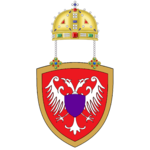Ilhuiyoco: Difference between revisions
mNo edit summary |
mNo edit summary |
||
| Line 1: | Line 1: | ||
{{CountryInfobox|Nation name=Ilhuiyoco|flag|coa|Motto=none|Anthem=none|map|capital city link=Xumalincan|largest city=|official language link=Mahuiztla language|official language=Mahuiztla|other languages=|ethnic group link=|ethnic group=|Religion=|Demonym=Ilhuiyocan|government link=Government|government type=Confederate Absolute Monarchy|Leader 1 title=Honoured Speaker|Leader 2 title=Chief Oracle|leader1=|leader2=|legislature=|event1=|date1=|event2=|date2=|event3=|date3=|event4=|date4=|event5=|date5=|event6=|date6=|total area=|water percentage=|total population=|population density=|economy type=Market economy|GDP total=|GDP per capita=|currency link=|currency=none|inequality index=|development index=|time zone=TBC|driving side=left|calling code=none|internet code=}}'''Ilhuiyoco''' was the most prominent name of a longstanding civilization in the southwest of Altaia, prior to colonization efforts from Anaria. It was predominantly known for its Great Houses (''mecayoh'', singular ''mecayotl''), its honouring of ancestral spirits, and its considerable technological advancement—at least, compared to much of the rest of the world, if not to Anaria. Remains of Ilhuiyocan culture, in the forms of architecture, traditions, and local languages, persist to this day across the south of Altaia, and in the writing system of [[Chaska]]. | {{CountryInfobox|Nation name=Ilhuiyoco|flag|coa|Motto=none|Anthem=none|map|capital city link=Xumalincan|largest city=|official language link=Mahuiztla language|official language=Mahuiztla|other languages=|ethnic group link=[[Iztomal]]|ethnic group=[[Iztomal]]|Religion=|Demonym=Ilhuiyocan|government link=Government|government type=Confederate Absolute Monarchy|Leader 1 title=Honoured Speaker|Leader 2 title=Chief Oracle|leader1=|leader2=|legislature=|event1=|date1=|event2=|date2=|event3=|date3=|event4=|date4=|event5=|date5=|event6=|date6=|total area=|water percentage=|total population=|population density=|economy type=Market economy|GDP total=|GDP per capita=|currency link=|currency=none|inequality index=|development index=|time zone=TBC|driving side=left|calling code=none|internet code=}}'''Ilhuiyoco''' was the most prominent name of a longstanding civilization in the southwest of Altaia, prior to colonization efforts from Anaria. It was predominantly known for its Great Houses (''mecayoh'', singular ''mecayotl''), its honouring of ancestral spirits, and its considerable technological advancement—at least, compared to much of the rest of the world, if not to Anaria. Remains of Ilhuiyocan culture, in the forms of architecture, traditions, and local languages, persist to this day across the south of Altaia, and in the writing system of [[Chaska]]. | ||
== Etymology == | == Etymology == | ||
Ilhuiyoco is a Mahuiztla word with the approximate meaning of "where the day is". | Ilhuiyoco is a Mahuiztla word with the approximate meaning of "where the day is". | ||
== History == | |||
=== Prehistory === | |||
The Pan-Altaians arrived on the continent of Altaia relatively late in the historical record, perhaps a mere 27,000 years before the present day. Still, they spread quite quickly over the continent, and by around 20,000 years before the present day they had passed all the way to the southwest. It would be some time—another 4,000 years or so—before they would begin the next crossing, through into D'Runia. | |||
Maize was domesticated, ironically enough, shortly after the crossing, around 12,000 years before the present day. This would become the staple crop for many in Altaia and elsewhere, including the predecessors to the [[Iztomal]] people. | |||
[[Category:Historic nations]] | [[Category:Historic nations]] | ||
Revision as of 17:20, 19 September 2023
| Ilhuiyoco | |
| Flag | Coat of arms |
|---|---|
| File:Missingflag.png | 
|
| Motto: none | |
| Anthem: none | |
| Locator map | |
| File:Anaria-small.png | |
| Capital city | sample_city |
| Largest city | |
| Official language | Mahuiztla |
| Other languages | |
| Ethnic group | |
| Religion | |
| Demonym(s) | Ilhuiyocan |
| Government | |
| Government Type | Confederate Absolute Monarchy |
| Honoured Speaker | |
| Chief Oracle | |
| Legislature | |
| Establishment | |
| Area | |
| Population | |
| Economy | |
| Economy type | Market economy |
| Other information | |
| Time zone | TBC |
| Driving side | left |
| Calling code | none |
Ilhuiyoco was the most prominent name of a longstanding civilization in the southwest of Altaia, prior to colonization efforts from Anaria. It was predominantly known for its Great Houses (mecayoh, singular mecayotl), its honouring of ancestral spirits, and its considerable technological advancement—at least, compared to much of the rest of the world, if not to Anaria. Remains of Ilhuiyocan culture, in the forms of architecture, traditions, and local languages, persist to this day across the south of Altaia, and in the writing system of Chaska.
Etymology
Ilhuiyoco is a Mahuiztla word with the approximate meaning of "where the day is".
History
Prehistory
The Pan-Altaians arrived on the continent of Altaia relatively late in the historical record, perhaps a mere 27,000 years before the present day. Still, they spread quite quickly over the continent, and by around 20,000 years before the present day they had passed all the way to the southwest. It would be some time—another 4,000 years or so—before they would begin the next crossing, through into D'Runia.
Maize was domesticated, ironically enough, shortly after the crossing, around 12,000 years before the present day. This would become the staple crop for many in Altaia and elsewhere, including the predecessors to the Iztomal people.